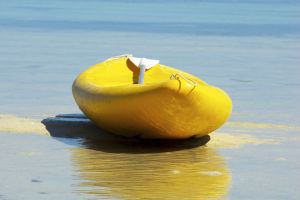Fishing Vessels Basic
Ever wondered what it takes to bring that fresh catch to your table or how fishermen brave the open seas in search of seafood? It all starts with fishing vessels!
So Lykkers! These boats come in all shapes and sizes, each designed for a specific type of fishing. In this guide, we'll break down the basics of fishing vessels – what they are, the different types, and what makes each one unique. Let's dive in!
What is a Fishing Vessel?
A fishing vessel is any boat or ship used to catch fish, crabs, lobsters, or other sea creatures. Fishing vessels can be as small as a simple rowboat or as large as a factory trawler that processes fish right on board. They vary widely in design, equipment, and size depending on the type of fishing they are used for and the waters they operate in.
Types of Fishing Vessels
1. Trawlers: Trawlers are large fishing vessels that pull a trawl net behind them to catch fish. They can be further categorized into stern trawlers and side trawlers, depending on where the net is deployed. Trawlers are commonly used for deep-sea fishing and target species like cod, haddock, and shrimp.
2. Longliners: These vessels use a long line with baited hooks spaced along its length. Longliners are ideal for catching large fish like tuna and swordfish. They are designed to travel long distances and operate in various water conditions.
3. Purse Seiners: Purse seiners use a large wall of netting that encircles a school of fish. The bottom of the net is pulled together like a drawstring purse to trap the fish. These vessels are popular for catching species that swim in large schools, such as sardines and mackerel.
4. Gillnetters: Gillnetters use vertical panels of netting that hang in the water. Fish swim into the nets and get caught by their gills. This method is widely used in coastal waters to catch species like salmon and herring.
5. Crabbers: Crabbers are designed specifically for catching crabs and other shellfish. They carry crab pots or traps that are baited and dropped to the seabed. Crabbers often have sturdy structures to handle rough sea conditions.
fishing vessels types
Video By Ships and port
Key Features of Fishing Vessels
Durability: Fishing vessels are built to withstand the harsh marine environment. They are often made of materials like steel or fiberglass, which provide strength and resistance to corrosion.
Storage Capacity: Depending on their size, fishing vessels have different storage capacities. Large trawlers and longliners may have refrigerated holds to keep the catch fresh, while smaller boats may use ice.
Navigation and Communication: Modern fishing vessels are equipped with advanced navigation and communication systems, such as GPS, radar, and radio, to ensure safety and efficiency while out at sea.
The Role of Fishing Vessels in Sustainable Fishing
Fishing vessels play a crucial role in sustainable fishing practices. By using specific types of vessels and equipment, fishermen can reduce bycatch (the unintentional capture of non-target species) and minimize environmental impact. For example, using circle hooks on longliners can reduce the number of sea turtles caught accidentally. Moreover, advancements in technology have made it possible to monitor fishing activities and ensure compliance with regulations.
Fishing Vessels Around the World
Fishing vessels vary greatly depending on the region and the type of fishing being practiced. In Asia, traditional boats like dhows and junks are still widely used, while in the North Atlantic, you’ll find massive factory trawlers that can process fish right on board. In the Mediterranean, smaller, artisanal boats are more common, often employing sustainable techniques like pole and line fishing.
If you’re considering getting into fishing, think about the type of fishing you want to do, the size of the vessel you need, and the waters you’ll be operating in. Whether you're looking to catch crabs off the coast or fish in the deep sea, there's a perfect fishing vessel out there for you!


